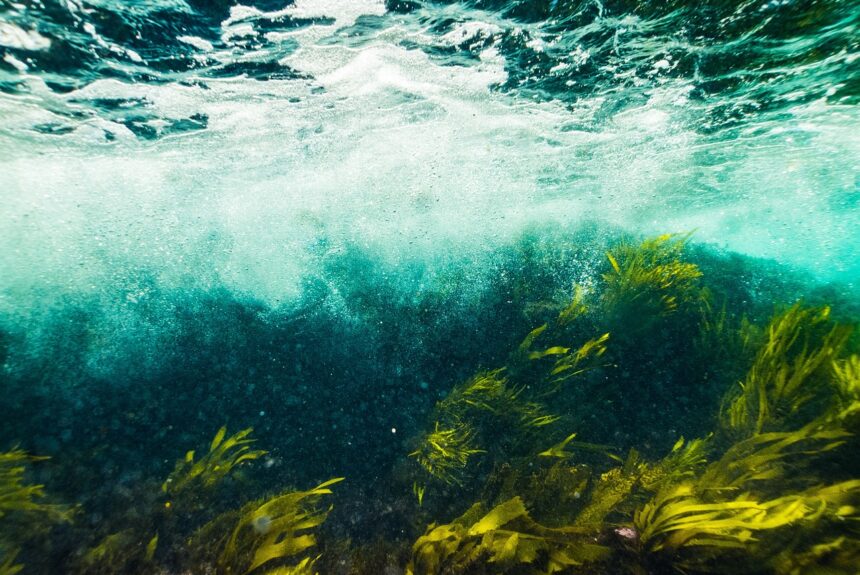A recent article in the New York Times highlighted the growing focus on ocean habitats (sometimes called blue carbon ecosystems) restoration, specifically kelp forests. Blue carbon ecosystems are made up of kelp, mangroves, seagrasses or salt marshes and are highly efficient at capturing and storing CO2 from the environment, removing an estimated 2 billion tons of carbon per year. California-based SeaTrees is working with local communities around the world to protect and restore blue carbon ecosystems.
“Much like the marine heatwaves that have knocked out 50% of the Great Barrier Reef over in Australia, on the west coast, here in California we have the same thing happening to our kelp forests,” says Michael Stewart, co-founder of SeaTrees.
>>>READ: Running Tide Technologies: Farming Kelp to Fight Climate Change
Kelp forests are a vital part of the California coast’s ecosystem, but over the last 10 years, they have lost 90% of their kelp cover. Kelp forests are some of the most biodiverse ecosystems in the ocean, providing a safe habitat for various species. They also mitigate the effects of climate change by reducing ocean acidity and pulling down carbon dioxide. Some studies indicate that marine plants can pull down 20 times more carbon dioxide per acre than land forests. The research in this area, however, is still developing. Other studies have shown that kelp forests may be less effective at sequestering CO2. Determining the amount of carbon dioxide that is absorbed or emitted by an ecosystem is a complex calculation. While kelp that gets deposited at the bottom of the ocean represents sequestered carbon, some carbon dioxide also gets released by invertebrates that feed on kelp.
In 2019, Michael Stewart founded SeaTrees: a non-profit with the hope of streamlining efforts to rebuild these valuable ecosystems. Now, anyone interested in expanding marine ecosystems across the world can get involved by sponsoring a restoration project or purchasing apparel like t-shirts and hats on the SeaTrees website. “It’ll take you 45 seconds to do it,” says Stewart. “Why isn’t saving the planet as easy as buying something off the internet.”
Currently, SeaTrees is working with The Bay Foundation to restore the kelp forests around the Palos Verdes Peninsula in Los Angeles. This particular stretch of California’s coast saw an 85% decrease in kelp forests in the past 100 years. “We’ve been restoring kelp forests for a couple decades,” says CEO Tom Ford. “We were hammering away.” But since the recent partnership with SeaTrees, the Foundation has found new energy. “We’ve had more support coming in from around the planet than I could’ve imagined was possible.”
This is the bread and butter of SeaTrees. The company excels at connecting the scientific community with local experts – by providing financial support through donations, and then communicating their impact to the world.
>>>READ: Can Single-Use Plastics Be Replaced By Seaweed?
To date, SeaTrees has 16 active projects across the globe, from watershed restoration in Hawaii, Cambodia, and Columbia to planting mangroves in Kenya, Indonesia, and Mexico. The company has planted a total of 2 million SeaTrees and has protected and restored 540,000 sq ft of kelp forests.
In 2023, the company hopes to expand its reach, specifically by developing more European sites. By 2030, SeaTrees hopes to have 100 projects dedicated to restoring blue carbon ecosystems. According to Stewart, “We will never reverse climate change without including the ocean ecosystems.”
SeaTrees is a testament to the power of entrepreneurs and innovation in addressing our greatest climate and environmental challenges.
Luke Brennan is a writer and software developer originally from Pittsburgh.
The views and opinions expressed are those of the author’s and do not necessarily reflect the official policy or position of C3.
